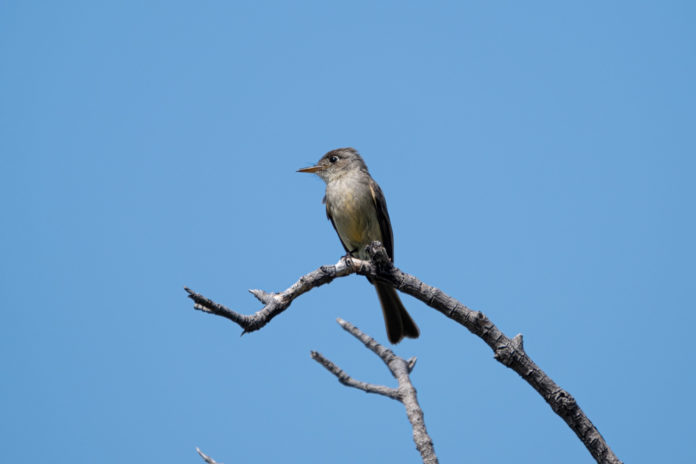My Nikes were holding me back, keeping me from getting a good look at the bird.
In high school, running cross country and track, a bunch of us had these shoes called Nike Waffle Racers. They were sleek things that made you feel fast as hell, at least until the lactic acid kicked in. Wide in the front, narrow in the back, great in dirt or on pavement. The soles were low and grippy and I can still hear the sound they made when you were running on the track. Apparently they’d come in a bunch of different color schemes, but the ones we had access to were a near-neon green, and we all just referred to them as TMIs, after Three Mile Island, the site of the then-recent nuclear meltdown.
I ran meets in those shoes until the treads went bald, then wore them around casually until the nylon uppers tore away and all my toes were visible like sardines in a can. And then I kept them in my closet for years after that, hoping someday there’d be a way to resurrect them.
In general I’m not a sentimental person, but I still miss those shoes. So much so the Nikes I was currently wearing were an homage to the old ones, or at least a bit of pre-packaged niche nostalgia. They had the same grippy tread, and a neon green that approached the TMIs’ intensity. (I thought they might be duller, but whenever I wore them, someone would invariably say, “Nice shoes,” in a way that was not clearly unsarcastic.)
I was wanting to dirty them up a bit, give them something of a patina, without totally trashing them. Standing at the edge of the salt pond, I thought it might be a little much. Keys muck never seems to improve the look of anything. And it isn’t trustworthy. Sometimes you walk out into it, and you’re fine for a while, then the next thing you know, voop, you’re up to your knees and you’re missing at least one shoe.
But that bird.
Kevin Christman had texted me Friday night, saying there’d been southeast winds for the last couple days, and he was going to go looking in the morning for some possible rarities that had blown in. I liked the idea, but was sitting at a poker table when he texted, and would be there a few more hours – ultimately losing heads-up to a guy who draws imaginary houses for a living – so early-morning birding wasn’t going to happen for me.
When Kevin texted at 10 a.m., he said there was nothing going on at Fort Zach. But close to 6 p.m., he texted and said maybe I should go look at an Eastern pewee at the Fran Ford Preserve, because upon further inspection, it wasn’t a straggling Eastern pewee, it was a stray Cuban pewee – a bona fide category-four rarity, a bird that has only been seen seven or eight times in North America.
Kevin, along with Mark Songer, had been over early, trying to get a good look at the bird, but left after a couple hours, having only heard it. I got there just after they left, taking the next shift.
Pewees got their name from the nominate species, the Eastern pewee, whose call sounds kind of like their name, but with an extra syllable – pee-a-wee. The Cuban pewee’s call is more of a smooth, sinking whistle. It sounds a bit like an incoming bomb, or at least the sound effect they use for incoming bombs in cartoons. And I heard the call as soon as I got out of the car. The call would repeat every 30 seconds or so for a while, then would stop. Then it would start up again, then it would stop.
Every time I heard it I would walk toward the source, then pause and wait for the bird to call again. I worked slowly from Government Road, along the narrow trails, past an abandoned bike or two, then a homeless camp or two, and then to the edge of the pond. I caught a quick glimpse of the bird, and took a few terrible photos, before it took off.
But the bird kept calling, and I followed the sound some more, and eventually found a spot where I could step into the pond relatively easily. The bird seemed to be on the far side of a small clump of trees on an island in the middle. I say “island,” but it was just a tiny bit of upland, a couple inches above the surface of the water, which looked to be about five inches at its deepest. That mud, though. My kingdom for my shrimper boots, which were gathering dust at home.
Eventually birdism won out over dandyism, and I stepped out into the mud, carefully shuffle-stepping through the hundreds of black mangrove roots that looked like skeletal fingers poking up from the ground. My socks got soggy and the Nikes squished, and I kept expecting to slip or sink but didn’t.
On the far side of the island the call was maddeningly close, but I couldn’t find the bird. Finally I looked up and it was in a tree right over my head. I backed up 20 or 30 yards to get better light and to give the bird some space.
The pewee sat there for a while, occasionally twitching, shifting itself on the branch. It took off once to nab a dragonfly mid-flight, then came back to the same branch and gulped it down. Occasionally it would pause, lift his head, and let out that clear, sinking call, something that would be heard every day in Cuba or the Bahamas, but not here.
I took some photos, then some video. Then I just stood there for a while, enjoying this private audience with a wayward rarity.
Later, when I got home, I kicked off my Nikes and threw them in the corner. I kind of liked the way they looked now.























